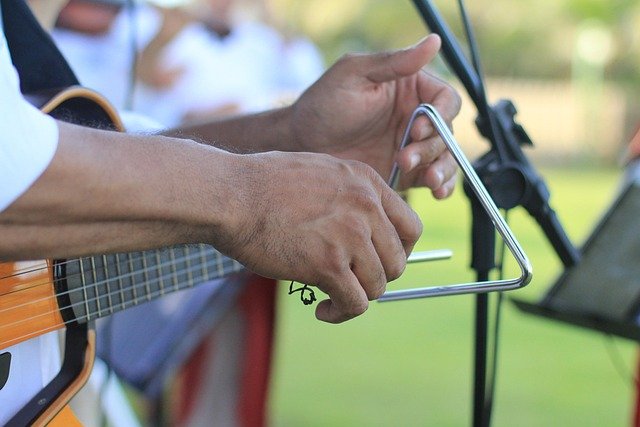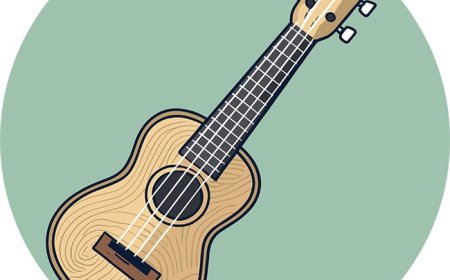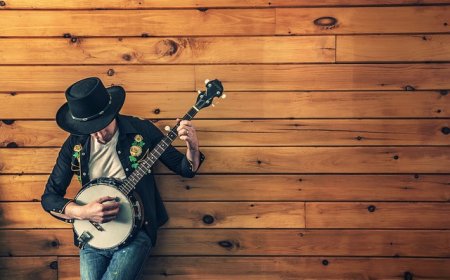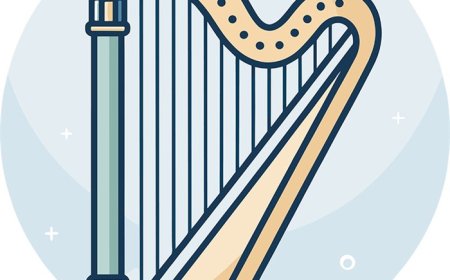Triangle Instrument Facts for Students | Learn How the Triangle Works & Its History
Discover what the triangle instrument is, how it works, its parts and history, and explore fun facts and famous players. A clear and fun guide to this shining percussion instrument for students.

🥇 Introduction
The triangle is a small, shiny metal percussion instrument that makes a bright, ringing sound when struck. Even though it’s one of the simplest-looking instruments, the triangle plays an important role in many types of music. You’ll find it in orchestras, bands, classroom music, traditional folk music, and even TV jingles! Its clean, clear sound can add sparkle, rhythm, or surprise to any song.
🎶 What Is a Triangle?
The triangle is a non-pitched percussion instrument made of a bent metal rod shaped into a triangle. One corner is left open so the sound can vibrate freely. When you strike the triangle with a metal beater, it makes a high-pitched, ringing tone that can last a long time.
Even though the triangle doesn’t play different notes like a piano or marimba, it’s very expressive. Musicians can play:
Loud, sharp hits
Soft, delicate touches
Quick rhythms and rolls
The triangle is often used for special effects, accenting rhythms, or adding sparkle in quiet or magical music.
🧩 Parts of the Triangle
The triangle may be small, but every part helps make its unique sound:
Metal Frame – Usually made of steel or brass, shaped into a triangle with one open corner.
Suspension String or Clip – Used to hang the triangle freely so it can vibrate.
Beater (Striker) – A thin metal stick used to hit the triangle.
Open Corner – This gap helps the triangle ring clearly without the sound being trapped.
Triangles come in different sizes. Smaller triangles sound higher and brighter, while larger ones sound deeper and more mellow.
⚙️ How Does the Triangle Work?
The triangle works through vibration of metal. When the beater strikes the triangle, the metal vibrates and produces a bright, ringing tone. Because the triangle is suspended by a string or clip, it can vibrate freely, which makes the sound resonate (last longer).
Even though the triangle doesn’t have different pitches, players can control:
Volume – by striking harder or softer
Rhythm – using different patterns and techniques
Tone – by striking in different places (near the corner vs. the side)
You can even mute the sound by grabbing the triangle with your fingers, which is called damping.
📜 History of the Triangle
The triangle has been used for hundreds of years and may have started in the Middle East or Europe during the Middle Ages. Early versions had rings on them to add a jingling sound and were often used in religious ceremonies.
By the 1700s, the triangle appeared in classical orchestras. Famous composers like Mozart, Beethoven, and Liszt used it in symphonies and operas to add brightness and rhythm.
In the 1800s and 1900s, the triangle became common in military bands, folk music, and school classrooms. Today, it’s used in all types of music—from traditional pieces to modern movie scores.
🥁 Famous Triangle Players
While the triangle is often played by orchestral percussionists who also play other instruments, a few musicians and performances stand out:
Evelyn Glennie – Famous percussion soloist who has performed triangle in orchestral and solo works
Ray Cooper – Pop and rock percussionist who has added triangle to live shows
Trilok Gurtu – Indian percussionist who uses triangle in world and fusion music
Steve Reich – Composer whose minimalist pieces often include triangle patterns
"Triangle Guy" (viral video) – A school concert performance that turned a student triangle soloist into a viral hit!
The triangle is often played with skill and precision by percussionists in bands, symphonies, and recordings.
🎶 Learning to Play the Triangle
The triangle is a great starting instrument for young percussionists. It helps students develop rhythm skills, timing, and listening ability. It also teaches control—because playing too loud or too soft can change how it fits into the music.
Students learn to:
Hold the triangle properly with a string or clip
Use the beater to strike different areas
Play rhythmic patterns and syncopation
Perform soft rolls by quickly bouncing the beater
Use damping techniques to stop or control the sound
The triangle may look easy, but playing it with precision in a concert requires focus and musicianship.
😄 Fun Facts About the Triangle
The triangle may look simple, but it's used in complex symphonic music.
Even famous composers like Tchaikovsky and Brahms included it in their music.
A triangle's sound can cut through an entire orchestra!
The triangle has no pitch but can still be played with different dynamics and rhythms.
In some cultures, triangles are used in dances and festivals.
A triangle solo in the orchestra is rare—but it happens!
👧 Kid-Friendly Summary
The triangle is a fun metal instrument shaped like a triangle that makes a shiny sound when you hit it with a little stick. You hold it by a string so it can ring loud and clear. Even though it only makes one sound, you can play rhythms, rolls, and accents to make the music sparkle!
📚 Vocabulary Words
Triangle – A small metal percussion instrument that rings when struck
Beater – A thin metal stick used to play the triangle
Damping – Stopping the sound by touching the triangle with your hand
Resonance – How long the sound lasts after hitting the instrument
Percussion – Instruments that make sound by being hit or shaken
Non-pitched – Instruments that do not play musical notes or pitches
Syncopation – Rhythm with accents on unexpected beats
Suspension String – The loop or clip that lets the triangle hang freely
❓ Interactive Quiz
1. What shape is the triangle instrument?
A. Square
B. Circle
C. Triangle ✅
D. Hexagon
2. What is the triangle made of?
A. Wood
B. Plastic
C. Metal ✅
D. Glass
3. What is used to play the triangle?
A. Bow
B. Mallet
C. Drumstick
D. Beater ✅
4. What part of the triangle helps it ring freely?
A. Its weight
B. The open corner ✅
C. Its color
D. The beater
5. What type of percussion instrument is the triangle?
A. Pitched
B. Non-pitched ✅
C. Electronic
D. Stringed




















































